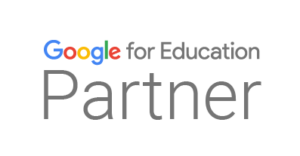The classroom has always been a space where values meet knowledge. Honesty, effort, and curiosity have shaped generations of learners. Today, that balance faces a new test. AI Classrooms would be the new normal. It offers speed, support, and access. But it also raises a key question. How do we safeguard learning values when machines can produce answers instantly?
Why Values Must Stay Central
Learning values are not optional. They form the heart of education. Integrity, fairness, and trust ensure that learning is more than just results. These values remind students that knowledge is built step by step. They protect the meaning of effort.
AI tools bring opportunities. They can explain difficult concepts, summarize complex readings, or generate quick drafts. But they can also tempt students to skip thinking. If left unchecked, the risk is clear. The process of learning may get lost behind the product of AI Classroom.
At this point safeguarding values does not mean rejecting technology. It means ensuring that values survive and guide its use.
The Balance Schools Must Strike
Schools stand at crossroads above all the choice is not simple. Should AI be fully welcomed into classrooms, or should it be restricted? The answer depends on the school’s culture, vision, and readiness. What matters most is the balance.
Some schools choose AI Classroom responsibly. They allow students to use it with transparency after that students reflect on how AI helped them. Teachers ask for oral presentations or process logs to confirm learning.
Others choose to limit AI use. They focus on authentic assessments. These include in-class writing, oral defenses, or projects that require critical thinking. Students sign pledges to commit to academic integrity.
Both approaches can work. What counts is clarity. Students must know the rules. Teachers must feel supported. Parents must trust the system.
Key Challenges in Safeguarding Values
The arrival of AI classroom brings new challenges for school leaders.
- Fairness – If rules are unclear, some students may misuse AI while others follow instructions.
- Teacher readiness – Many teachers feel unprepared to handle AI-related tasks. Training is essential and not only the tasks.
- Parental concern – Families worry that technology may replace genuine learning. Clear communication reduces these fears.
- Assessment gaps – Old exam formats are no longer enough. Schools need creative approaches to test real understanding.
Why Clarity Builds Trust
Clarity is the strongest safeguard for values. When schools set clear AI rules, they remove doubt. Students understand what is allowed, teachers know what to expect whereas parents see fairness in action.
Clarity also supports accountability. If a policy is explicit, misuse can be addressed fairly. It builds consistency. Every student learns under the same expectations.
Most importantly, clarity builds trust. It assures parents, students, and staff that learning values are not being sacrificed.
Benefits of Protecting Values
Schools that act early and guard values see long-term benefits.
- Students learn responsibility – By practicing AI classroom literacy, they understand how to use tools wisely.
- Teachers feel empowered – Training equips them to handle modern challenges with confidence.
- Assessments grow stronger – Process-driven tasks ensure learning cannot be outsourced.
- Reputation improves – Schools that balance innovation and integrity stand out as forward-thinking yet grounded.
These benefits are not abstract. They shape daily classroom life, influence how students see honesty and prepare learners for the future without losing the essence of effort.
Steps to Safeguard Values
The journey begins with a simple commitment that is learning values will not be compromised. From there, schools can take clear steps.
Reflect on priorities – Define what values matter most. Is it originality? Is it the process of learning? This shapes the policy.
Communicate openly – Every teacher, student, and parent must know the rules. A policy that is hidden is no policy at all.
Redesign assessments – Focus on formats that show real understanding. Oral presentations, draft submissions, or collaborative projects make a difference.
Support teachers – Provide training and resources. Confidence among teachers creates confidence among students.
Turning Challenge into Opportunity
AI classroom is not only a risk. It is also a chance to rethink how learning happens. Schools can use this moment to make learning values visible again.
Instead of focusing only on results, the focus can shift back to effort and growth. Instead of fearing AI, schools can guide students to see it as one tool among many. The challenge becomes an opportunity to strengthen, not weaken, education.
The Future of Learning Values
Technology will keep changing. AI will grow smarter and more common. But the values of education must remain stable. Integrity, fairness, and accountability are timeless.
Schools that safeguard these values will not fall behind. They will not only lead the way but will also show students that progress and principles can live side by side.
Indeed, safeguarding learning values in the AI classroom is not about resisting change. It is about guiding the students properly. With clarity, courage, and thoughtful design, schools can ensure that the heart of education continues to beat strongly.




 1st Floor, H-31, Sector 63,
1st Floor, H-31, Sector 63,
I enjoyed reading this article. Thanks for sharing your insights.